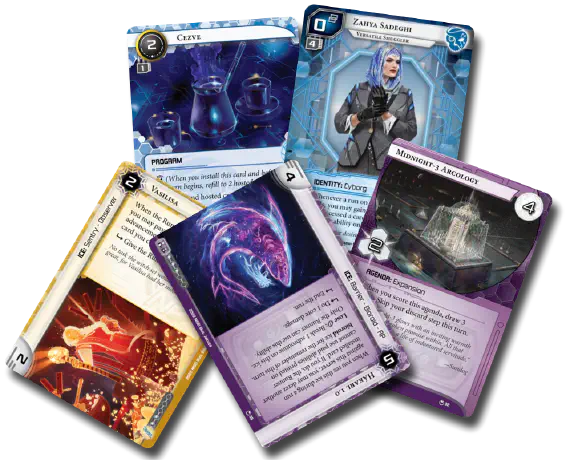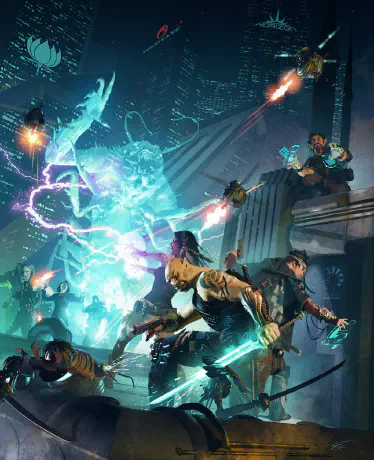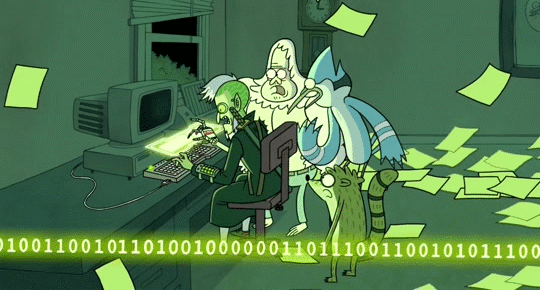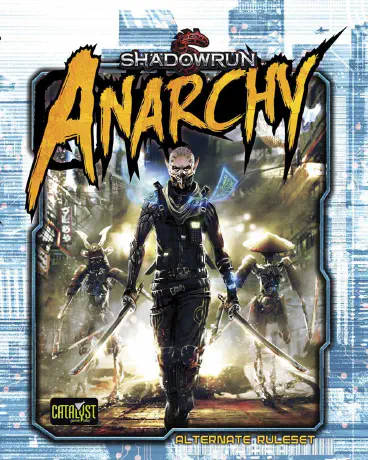Shadowrun Anarchy: Simplified or Simplistic Rules?
Thanks to SUSD’s video on Android: Netrunner, I’ve found myself playing quite some matches of the card game recently. The fact that the cyberpunk theme being is well represented in the mechanics has captivated me very dearly — so much so that it got me wanting to tell a story in a similar world. That’s when I started going through my old stuff looking for a Shadowrun Tabletop RPG book.
Some good 5 or 6 years ago, when I used to play RPGs much more frequently, I DMed Shadowrun for the first time. The setting mixes cyberpunk aesthetics/themes with misticism, monsters and magic, and is one of the most amazing worlds to tell stories on. Also, the ammount of items that are described in the equipment chapter of the rulebook transforms character creation into a walk through a toys store. But these were not the only things that left an impression on us.
The shadowrun rules were horrendous. Before even trying to play I was almost quit reading the manual, because I couldn’t absorb how most things worked. Not having experience outside D&D 3.5 also contributed to me struggling with the rules. But, as a group, we managed to overcome this and created the player characters (commiting an almost acceptable number of errors and rules violations). All of them ended up looking really cool, filled with mods, magic, heavy weapons… It was really fun thinking of what they could do in a mission.
The complicated part was doing it. Even someone who works with spreadsheets wouldn’t have seen as many tables per square meter as that rulebook has. Even though playing was fun, we couldn’t stop but notice the bitter taste the rules left in our mouths.
Fast-forward to 2022, and I’m thinking: “maybe Shadowrun is easier now that I’m older”. I opened up the book and, to my unfortunate surprise, it hadn’t changed a bit. Everything was there: the magical powers, the body mods, the guns, the vehicles… and the tables. The group that I want to DM for is not the same that I’ve played Shadowrun years before, but it also highly values simple rules. I would even dare to say most of them don’t have a good notion of the rules of the RPGs we usually play (which doesn’t matter much, since most of the time they’re useless). Looking at the weight of the Shadowrun rules, I close the book.
But in 2019 the 6th edition of the game was release, and it promised simpler rules and more straight forward systems. Great, that’s just what I wanted! Excited upon hearing the about the existence of this edition, I started looking for opinions about it. Then I discovered that the publication was rushed to keep up with the Cyberpunk 2077 hype, with many users complaining about broken and dysfunctional systems. Am I bound never to play Shadowrun?
It was at this point that, while looking for alternative systems and rulesets, I ended up finding Shadowrun: Anarchy — a rules-light shadowrun book released in 2016. It doesn’t have such a deep explanation of the setting, or even a big spell and equipment list; but there is enough material to start playing. If you have the 5th edition manual as a reference, you’ll be able to fill in the gaps about the setting and get a cool item/spell/mod list. After reading the book, I decided to GM it.
I had the general idea of the story already laid out in my head since long ago, for a fantasy adventure: the players get together to investigate a death and resurrect the victim’s spirit to help them out. Since Shadowrun has magic in it, I could run the adventure as-is, but I decided to change it: The victim made backups of his mind sometimes a year, and when he disappears, the players find their ROM construct of two weeks ago, and it has no idea what could’ve happened to it’s flash and bones counterpart.
With a rules system and adventure set, I assembled 4 players to create their characters. The results were as follows:
- Alyonka has little left of what made her body human. Cyber-arms and legs grant her supernatural accuracy and speed, and cyber-eyes chase her victims down the dark nights. Ex-member of Red Army secret unit, she is always seen wearing her holo-mask over her face.
- Could Catnip’s feline characteristics, like his cat tail or ears, be the effects of the return of magic to our world? Or could they be the results of experimental tech developed by some megacorporation? What we know is that before becoming a shadowrunner, Catnip was the only survivor of the massacre of the shamanic tribe in which he lived, located in the country that succeeded Brazil: Amazonia.
- Seer is one of the best mechanics of this district of town, carrying all his repair tools in his cyber-hand. What few people know is what he does outside his garage: besides being a pilot, seer is also a decker that sells data on the black market, stolen with his trusty MCT Fly Spies.
- Little is known about the past of Luis, besides the fact he came from Amazonia. He channels magic through his body to perform supernatural feats, like walking in the walls, or seeing through them.
We just finished playing the adventure’s first part (out of 3). I have mixed feelings about the rules in Shadowrun: Anarchy. Rules-light doesn’t describe this game so well… perhaps under-ruled would be better. I’d still pick Anarchy over 5th edition, but it still has too many mistakes that can’t be overlooked.
Starting with combat: the distances have been abstracted to 3 values: close, near and far. We don’t want a tactical combat in a rules-light system, so this was a good call. The problem is that the other components that make-up combat were not abstracted enough. The level of detail is still too high, with one roll per shot/strike, and two different HP bars. A more dynamic combat style (I’m thinking of Blades In The Dark and its stress system) would greatly benefit the flow of the game. There haven’t been combat moments in the game yet, but I can easily see them becoming the repetitive “wait my turn, attack, and back to waiting”.
Now that combat is half tactical and half abstract, the guns stop making much sense. The two attributes that describe a weapon here are range and damage. But with distance being so abstract and damage so concrete, distance is simply thrown out of the window in favor of damage. There’s, of course, a roleplay difference in that a Rocket Launcher is loud and impossible to hide, but most guns aren’t rocket launchers. So the weapon list that had 20-ish items goes down to 5 or 6 relevant entries. Maybe a system like what The Sprawl uses, where “tags” describe item characteristics (“silenced”, “concealable”, “long range”, …), would fit better than worrying about numeric definitions.
Mechanically, the game doesn’t have much to say about. Two damage types, three distances, and some re-rolling of dice: these describe most of the effects you’ll read on weapons, mods and spells. This is another instance where the game has shot itself in the foot: if you have a rules-light system with a narrative focus, relying mainly on the mechanics to describe your items is a bad idea. The already mentioned tag system of The Sprawl is a very elegant solution to this: a cyber-eye doesn’t grant +2 re-rolls in ranged attacks, it has the “records video” and “heat vision” tags, so the DM can interpret them and grant an advantage when the player takes aim at enemies.
All in all, Anarchy’s biggest flaw is not being able to distance itself more from its parent system. It gets stuck midway through instead of fully diving on the fiction first style. There are even two attempts1, 2 at adapting Shadowrun into Dungeon World hacks, made by fans. But even though I’ve spent the last two paragraphs badmouthing the game, our group managed to create characters, play (and roleplay), and have fun. So don’t let the problems I have with the system stop you trying this out with your group!
But now that I started reading the Dungeon World rule book, and intend on DMing a campaign for another group using it, I’m really interested in the Shadowrun hacks. Right now, changing systems would be too cruel to my players, since that’d mean throwing out a character sheet that has seen a grand total of 1 session. (But be assured that after the 6th or 7th session, we’ll be trying something else…)



